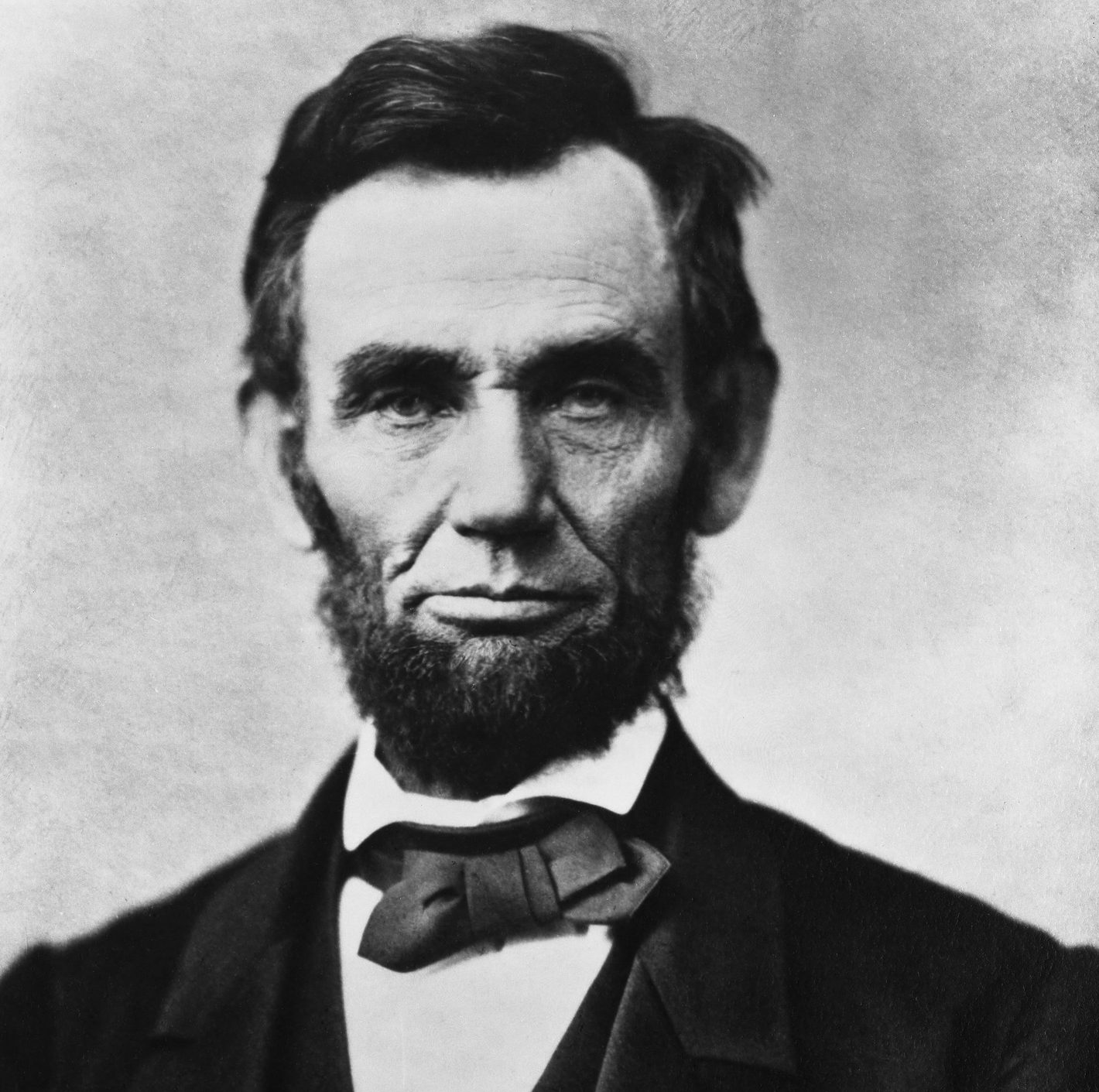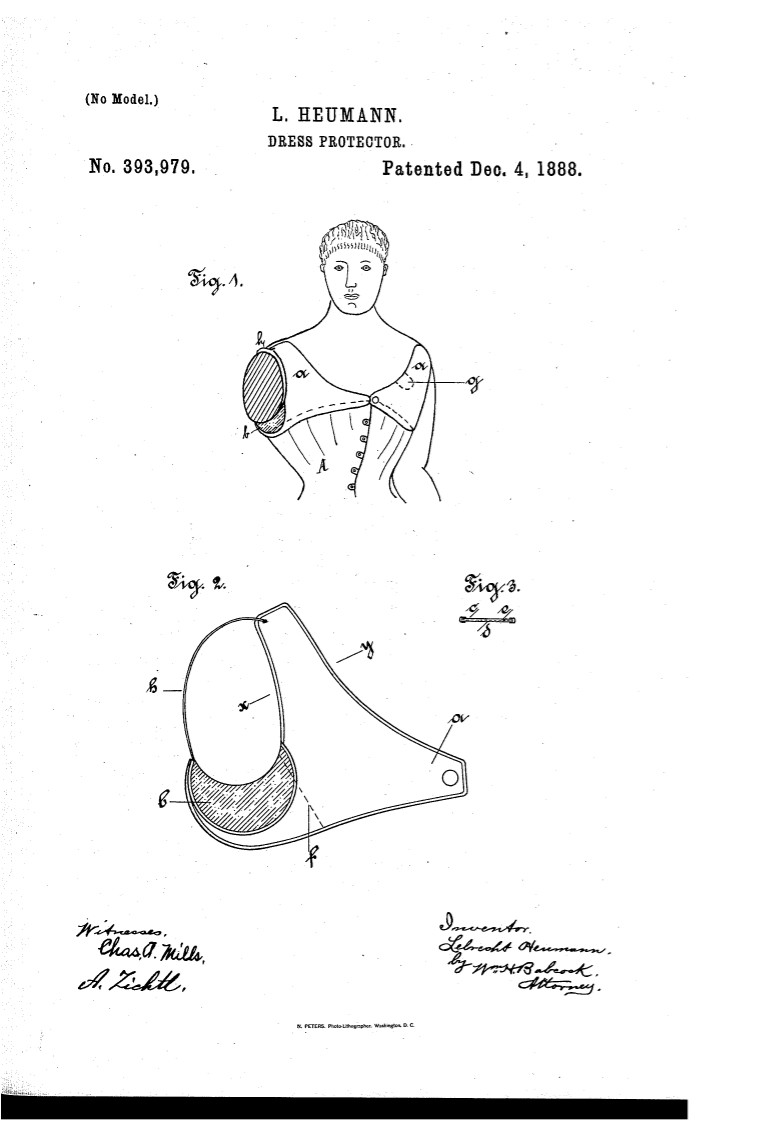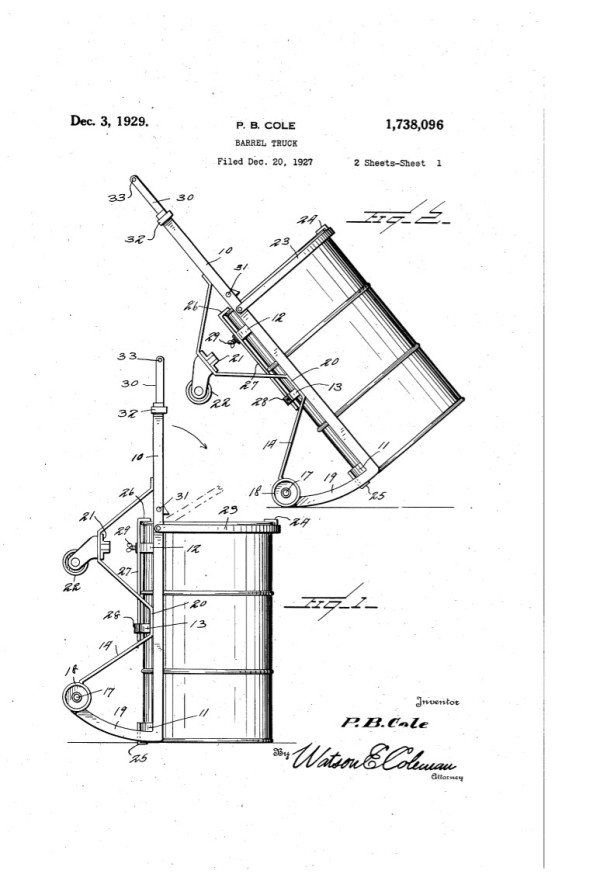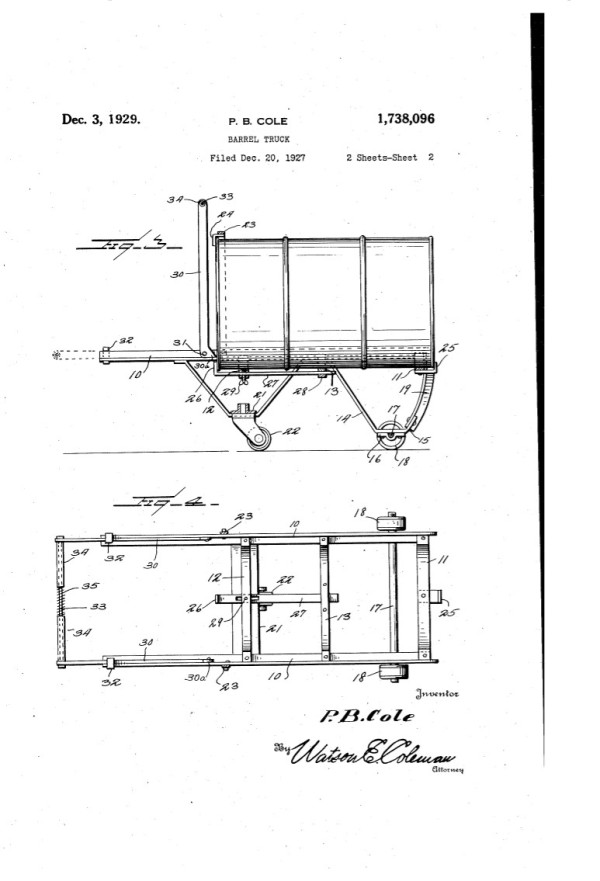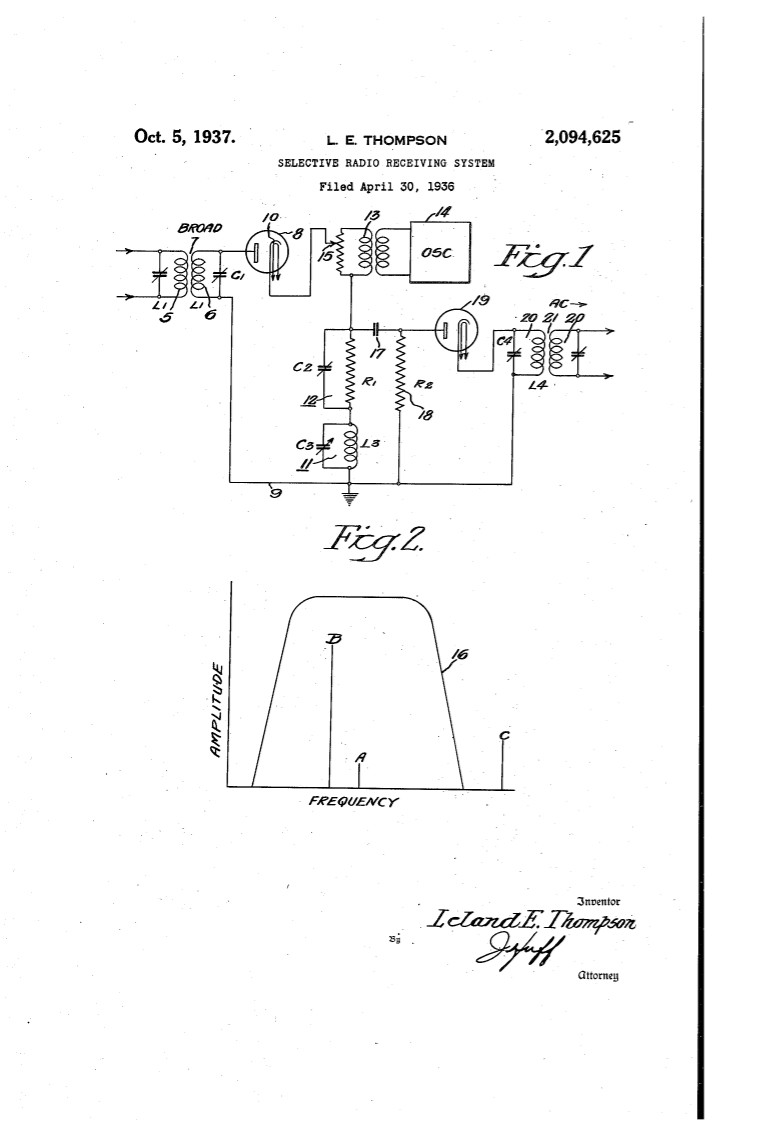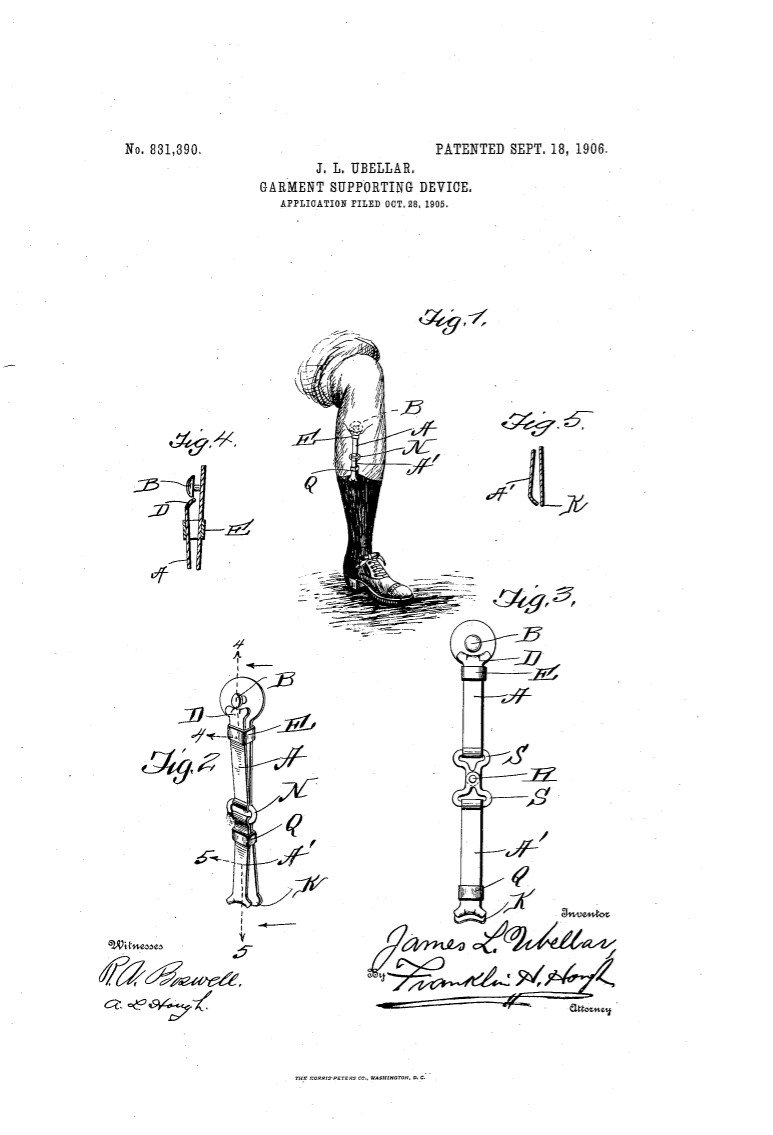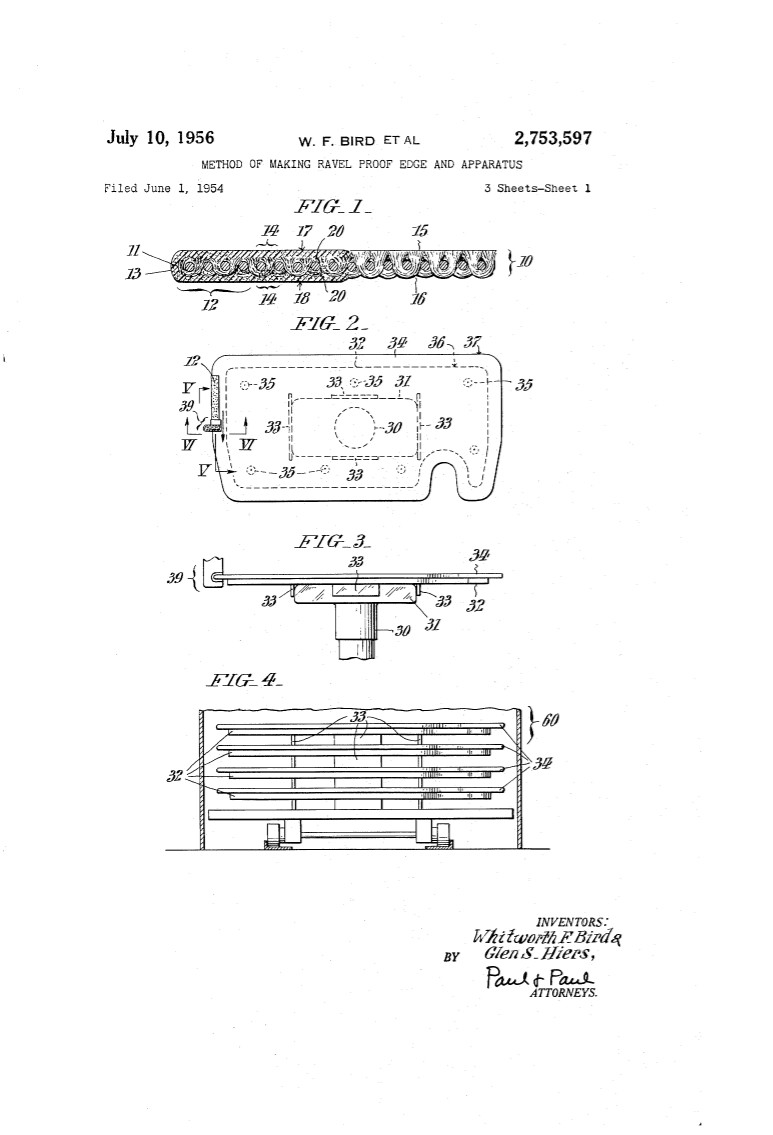Abraham Lincoln, Intellectual Property and Labor Day

Labor Day, the first Monday in September, is the time when we salute workers and recognize them for their contributions to this country and the economy. Celebrations are held all over and, whether in the form of a parade, picnic or a barbeque, it is important to reflect on this holiday.
One of the biggest supporters of labor and intellectual property was Abraham Lincoln. Abraham Lincoln was once quoted as saying “I always thought that the man who made the corn should also eat the corn.”
As an attorney and patent holder himself (U.S. Patent No. 6,469), Lincoln was involved in all facets of intellectual property from invention to prosecution. He had a profound understanding of the need for patent and copyright protection and the ability to connect intellectual property to a person’s right to the fruits of their labor. He was one of the biggest advocates of free labor and a strong opponent of slavery. In 1847, Lincoln conveyed the free labor axiom when he stated that "each individual is naturally entitled to do as he pleases with himself and the fruit of his labor."
In many of Lincoln’s speeches, he discussed and endorsed the need for greater protection of intellectual property rights. In his 1858 lecture on Discoveries and Inventions, Lincoln stated “man is not the only animal who labors; but he is the only one who improves his workmanship. This improvement, he effects by Discoveries, and Inventions.” This lecture detailed the many achievements that had been accomplished in the areas of “writing and of printing, the discovery of America, and the introduction of Patent laws.” Lincoln commended the patent system, stating that before patent laws were introduced “any man might instantly use what another had invented; so that the inventor had no special advantage from his own invention. The patent system changed this; secured to the inventor, for a limited time, the exclusive use of his invention; and thereby added the fuel of interest to the fire of genius, in the discovery and production of new and useful things.”
In 1859, at the Wisconsin State Fair, in front of the Wisconsin State Agricultural Society, Lincoln tied patent rights to free labor. He praised the intellectual property clause which protected inventions, specifically those critical to farming and said “that no other human occupation opens so wide a field for the profitable and agreeable combination of labor with cultivated thought”. This is a perfect testament to intellectual property. By rewarding authors and inventors for the works they have created, whether that be patents, copyrights or works of arts, it all leads to the stimulation of self-improvement and society as a whole can benefit from that intellectual progress.
This time each year, we reflect on and honor the work of laborers in our country. It is fitting to reflect on the words of Abraham Lincoln: “I know of nothing so pleasant to the mind, as the discovery of anything which is at once new and valuable -- nothing which so lightens and sweetens toil, as the hopeful pursuit of such discovery.”
Patent of the Day: Four-Wheel Drive Mechanism
On this day in 1921 George W. Smith was granted the patent for Four-Wheel Drive Mechanism. U.S. Patent No. 1,386,967.
The object of the invention is to provide a vertical and central drive for the front wheels, whereby the latter are free to swing and easy to steer without interfering with the transmission of power thereto. Also the aim is to transmit power to each front wheel at the same rate of speed as it is transmitted to the rear wheels.
Another feature is to provide a brace for each front wheel vertical shaft whereby the latter is held in vertical alinement while the car is in motion and the wheels are moving up and down owing to the unevenness of the road.
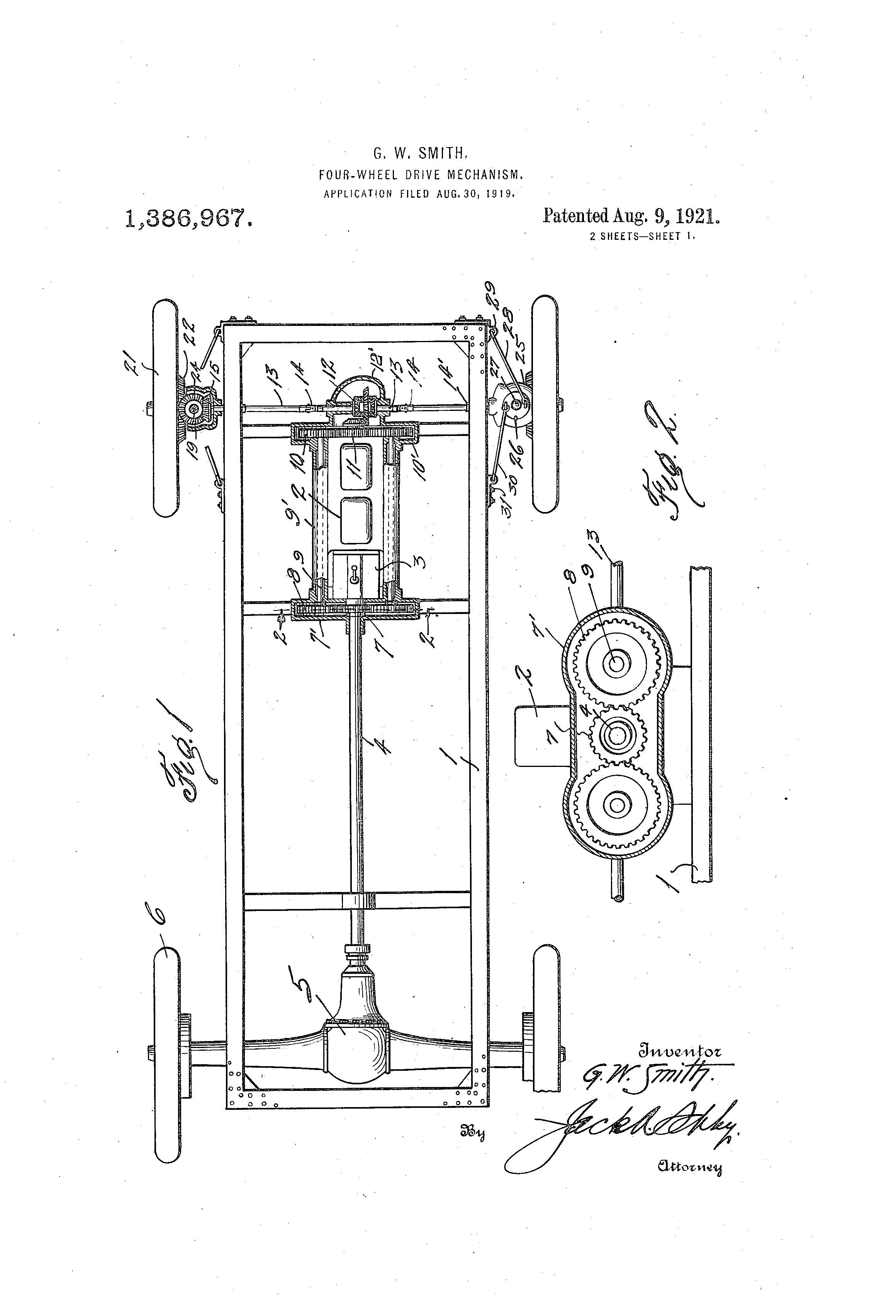
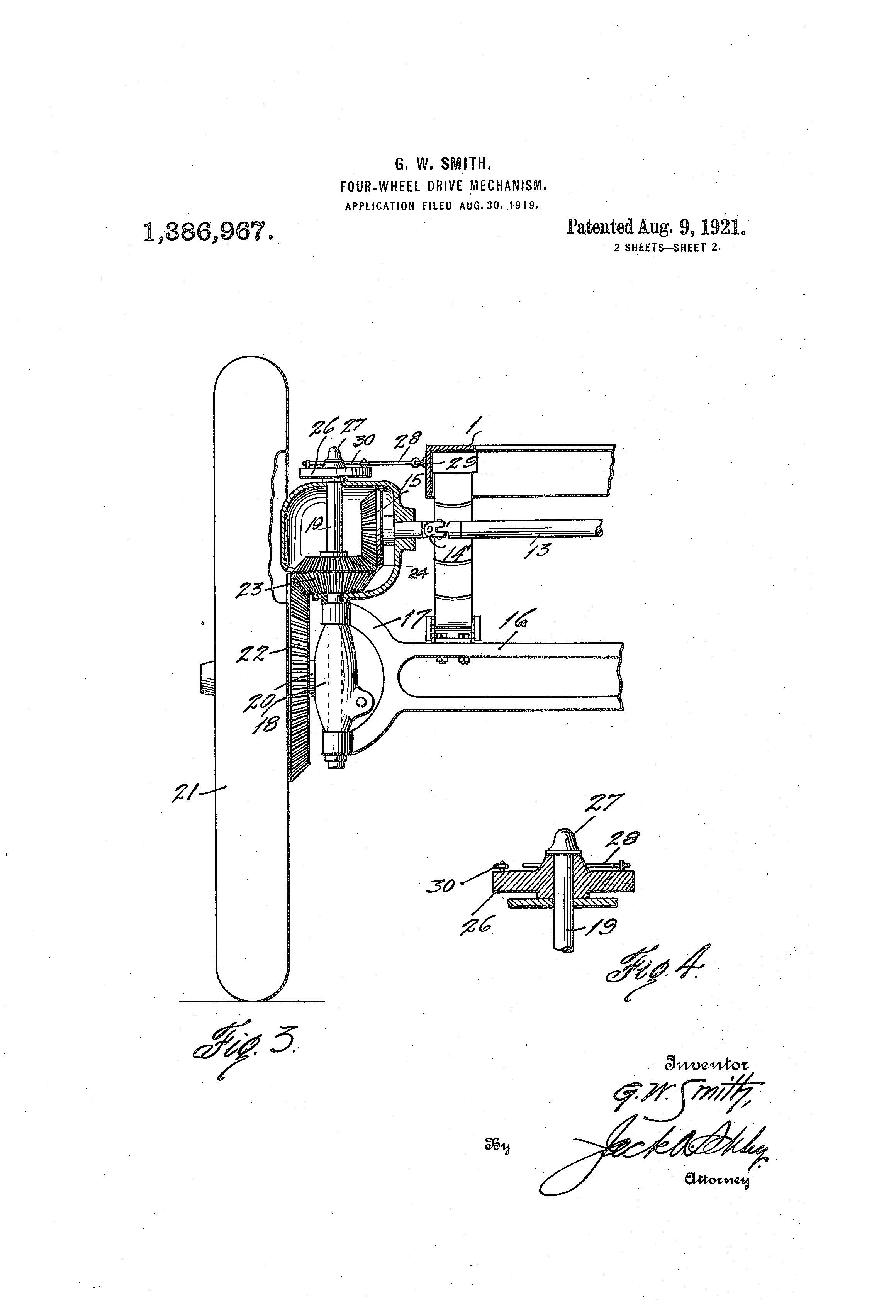
Patent of the Day: Metallic Conduit for Electric Wires
On this day in 1899 Edwin T. Greenfield was granted the patent for Metallic Conduit for Electric Wires. U.S. Patent No. 630,501.
As heretofore used metallic conduits for containing electric wires have been made air-tight and water-tight and particularly where the interiors of such conduits have been lined with an insulating substance, the object being to prevent the oxidation of the pipe and injury to or deterioration of the insulating lining. The use of such conduits has been attended with certain practical difficulties – namely, changes of temperature have produced internal sweating of unlined conduits, and as no means were provided for the ventilation of the same the moisture injuriously affected the insulation of the wires and caused the oxidation of the pipe; but the most serious difficulty was that the presence of the moisture was liable to produce a short circuit between the electric wires themselves or between the wires and the metal pipe. When this occurred with currents of large amperage, the gases which were developed by the heat produced by the short circuits would expand until the conduit would burst. This rupture usually occurred at the heated spot, and the hot metal and burning particles of insulating material were scattered through the surrounding space or apartment and were liable to produce a destructive fire. This danger is insidious, since the short circuit is liable to take place in the walls of unoccupied rooms or when concealed in remote places, so that the resulting fire has an opportunity to gather headway before it is detected. This invention is particularly designed to guard against these dangers; and it consists in a metallic conduit vented radially in all directions throughout its length, so as to permit the free circulation of the atmosphere to its interior and to provide an outlet for the gases generated by a short circuit, so that they cannot collect in sufficient volume to create so an explosion. As a result of this construction the chances of fire from a short circuit between the electric wires in the conduit or between the wires and the conduit itself are greatly reduced, for while the metal may become highly heated, so that in certain positions it might set fire to adjacent woodwork, yet the process would be relatively slow and the fact and location of the short circuit would be disclosed by the smoke coming through the vents in all directions. The ventilation of the conduit also secures immunity from oxidation, for in case moisture should collect in the interior it is speedily dissipated by the circulation of the air there through, and in this way the chief cause of short-circuiting is avoided, as well as the oxidation of the pipe and of the insulation of the wires.
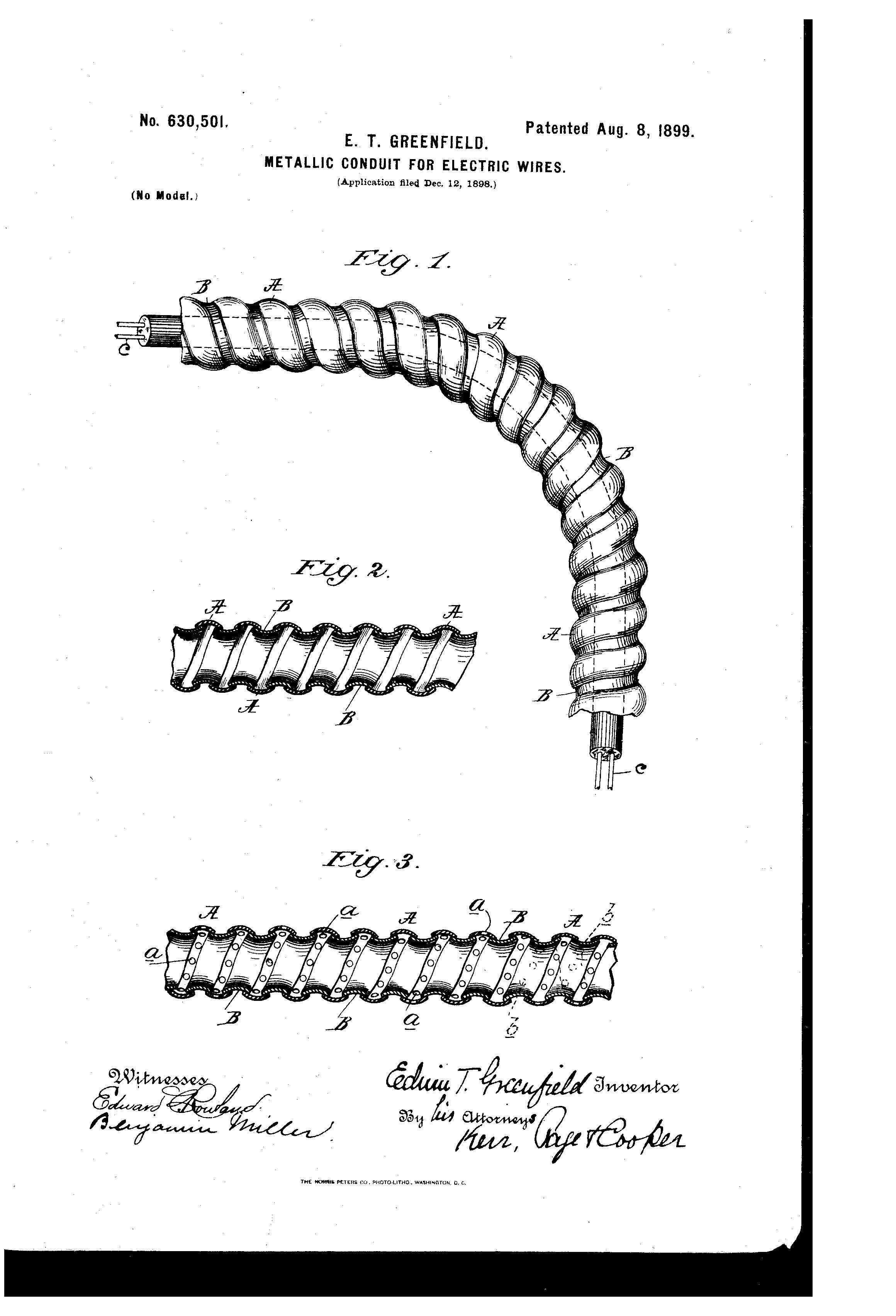
Patent of the Day: Hair Singer
On this day in 1890 James H. Bevington was granted the patent for Hair Singer. U.S. Patent No. 433,439.
This invention relates to a device for singing or cauterizing the ends of human hair after being cut by the hair-dresser with the object of closing the hair-ducts exposed by the barber’s shears, and this preventing waste of the vital fluids upon which the life and continuance of the hair depend.
The construction of the device is such as to slightly cauterize and close up the exposed ends of the cropped hair without injuriously singeing the same or impairing its vitality.
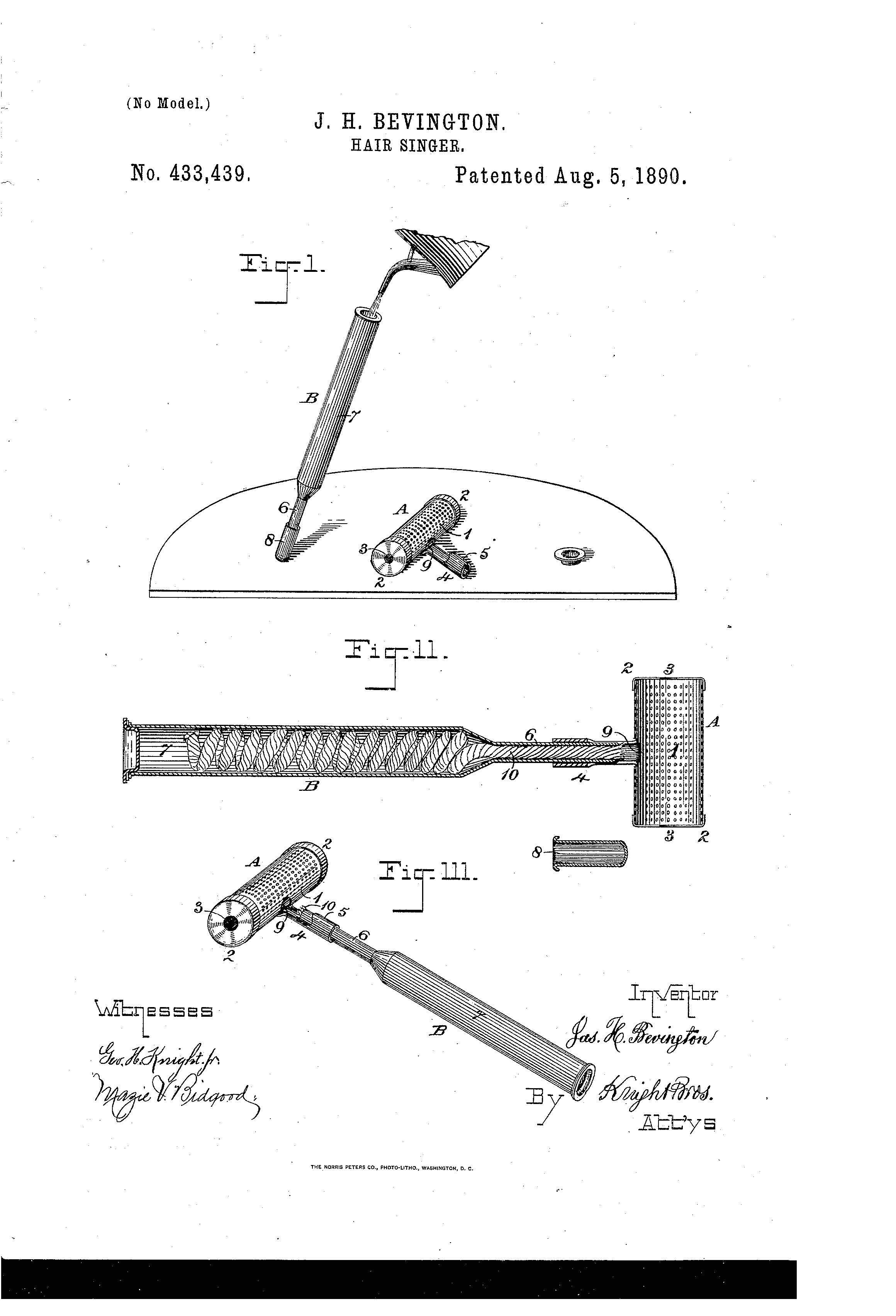
Patent of the Day: Dress Protector
On this day in 1988 the patent for Dress Protector was granted. U.S. Patent No. 393,979.
The Dress Protector was invented by Lebrecht Heumann, from Cologne, Prussia. This patent was granted on December 4, 1888 as U.S. Patent No. 393,979
The object of Mr. Heumann’s invention is to provide an under-garment which will hide the outline of the top of a corset, absorb the precipitation from the wearer’s body, but also possess sufficient stiffness to retain its own proper form, fitting the body of the wearer, and an external lining impervious to water, which will prevent the perspiration from passing through to the outer garments.
Mr. Heumann was clearly way ahead of his time with this invention. This invention is the dri-fit of the 19th century. I’m sure this Dress Protector was appreciated by a lot of women in this time period. They didn’t have deodorant or the advances in hygiene that we have today. Imagine being able to wear the latest fashionable dresses without having to worry that you’ll show perspiration in the heat. That can be a very embarrassing situation.
It seems like a lot of the clothing being made today is all about dri-fit, wicking moisture away from the body, keeping a person cool when it’s hot and dry as well. I’m not sure how much this Dress Protector cost back in 1888 but I know today people would pay top dollar for them. Women, also know the importance of seamlessness. There is nothing more annoying than having a great outfit picked out and then have it ruined by the seam from your under-garment showing.
Again Mr. Heumann was ahead of the times with the corset form. Thanks to the Kardashians and other celebrities waist training has become the “next big thing”. A waist trainer is basically a corset you can tighten to give you that hour glass shape. He had all these things in one dress that we are using today in many different forms.
Patent of the Day: Barrel Truck
On this day in 1929 the patent for Barrel Truck was granted. U.S. Patent No. 1,738,096.
The Barrel Truck was invented by Perino B. Cole, from Cambridge, Nebraska on December 3, 1929 as U.S. Patent No. 1,738,096.
Mr. Cole’s invention relates to trucks for handling barrels, bales or like containers, and the general object of the invention is to provide a barrel carrier or truck so constructed that a barrel may be readily engaged with the truck for transportation or released therefrom for discharge.
A further object is to provide a truck of this kind provided at its ends with rockers whereby the truck may be very readily tilted back from an upright position to an inclined position on its front wheels.
One thing about the Barrel Truck that made it novel is that it could be attached to a truck, unattached from a truck and then used like a dolly to transport the item still in the barrel. This made getting products to customers quick and efficient.
This invention is still used today but with a lot of modifications to it. The safety concern of having the Barrel Truck attached to the hitch of a truck is not as safe as what is required now, a trailer with brake lights, proper wheels etc. I have seen improvements to this where the barrel is now made of metal allowing for the ability to ship a lot of different items. Wood barrels are limited in what they can ship.
The concept of this invention has played a role in a lot of modern developments. One that comes to mind first is the trash cans we now use and get from the sanitation company. Those trash cans are modified versions of the Barrel Truck. They can be filled with objects and pulled out to a location with ease. They are just not made to be attached to a truck and hauled somewhere.
Patent of the Day: Grain Door for Cars
On this day in 1906, the patent for Grain Door for Cars was granted. U.S. Patent No. 833503.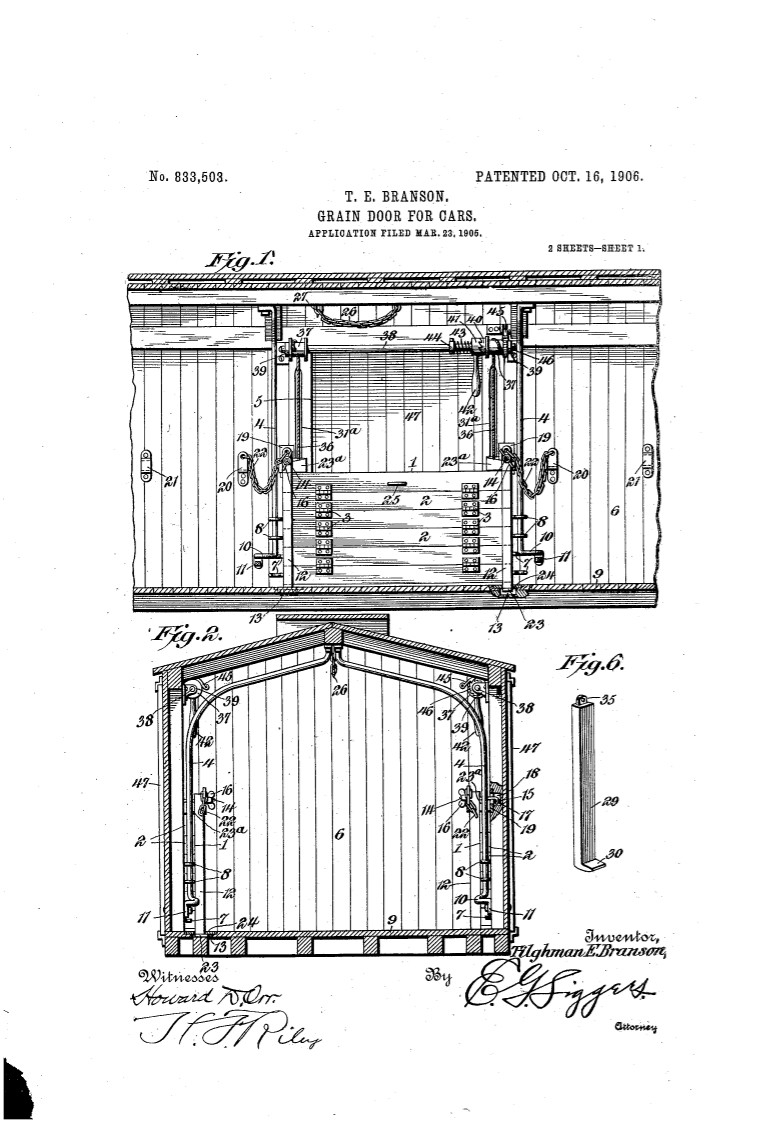
Patent of the Day: Display Carton
On this day in 1940, the patent for Display Carton was granted. U.S. Patent No. 2217953A.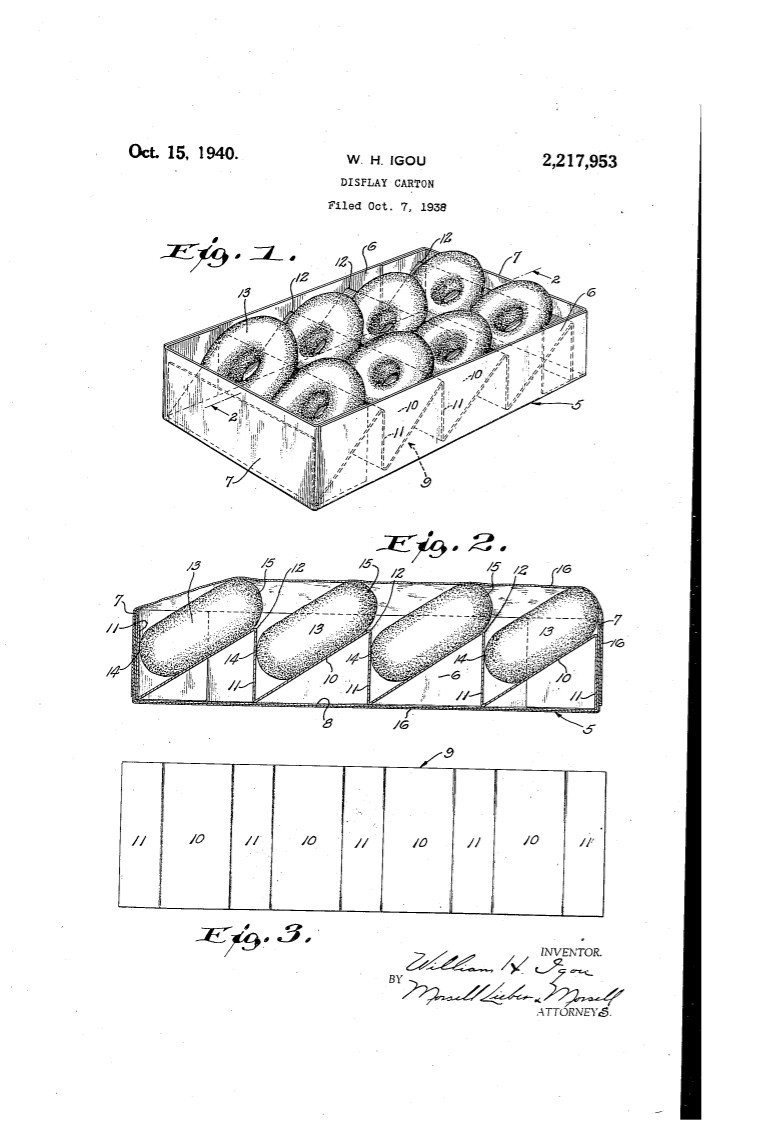
Patent of the Day: Selective Radio Receiving System
On this day in 1937, the patent for Selective Radio Receiving System was granted. U.S. Patent No. 2,094,625.
Patent of the Day: Garment Supporting Device
On this day in 1906, the patent for Garment Supporting Device was granted. U.S. Patent No. 831,390.
Patent of the Day: Ravel Proof Edge and Apparatus
On this day in 1956, the patent application for Method of Making Ravel Proof Edge and Apparatus was granted. U.S. Patent No. 2,753,597.
